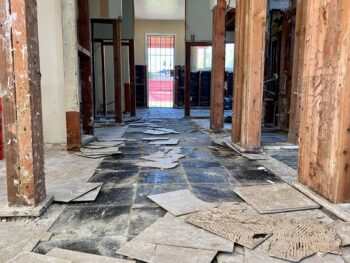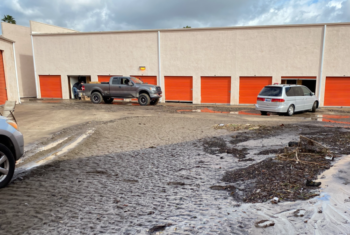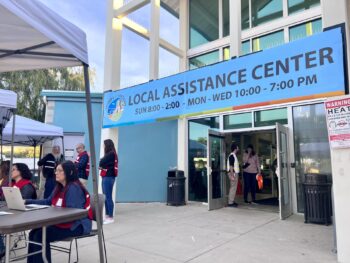Did you feel some shaking early Friday morning? San Diegans reported feeling light tremors that we now know were due to a 6.3 magnitude earthquake centered in the Pacific Ocean, 155 miles southwest of Avalon on Catalina Island, according to the U.S. Geological Survey.
It was the biggest earthquake in that particular area in at least 40 years, the U.S.G.S said. For San Diegans, it’s a reminder that we live in a geologically active region. Drifting tectonic plates and the forces within the plates themselves may cause the earth to move at any time. Are you prepared if the next big quake is centered a little closer to home?
“The earth’s crust may feel still to us most of the time, but the energy under our feet is great,” said Holly Crawford, County Office of Emergency Services director. “Unlike many other hazards, earthquakes are ‘no notice’ events and that’s why we encourage everyone to prepare now.”
Friday’s earthquake happened at 2:36 a.m. along shallow “normal” faults within the crust of the Pacific plate, the U.S.G.S said. That means one section of the plate shifted or slipped down around the fissure relative to the adjacent part of the crust.
The location where it happened is about 250 miles southwest of a more dramatic fault—the San Andreas Fault—where the Pacific plate grinds against the North America plate. Relative to the undersea movement felt Friday, the “strike-slip” forces that occur when two major plates along the San Andreas fault grind make the earth rumble more frequently—and potentially with much greater strength.
In San Diego, we are susceptible to damaging quakes from multiple faults, including the San Andreas Fault, and the smaller but potentially forceful Rose Canyon Fault that starts in Mission Valley and runs through the Interstate 5 corridor and La Jolla.
So as you reflect on the moving earth beneath our feet, please also think about being prepared. Here are some tips for what to do before, during and after a quake.
Before:
- Check home for potential hazards – things that can topple over and cause injury.
- Secure televisions, bookshelves and other heavy furniture to the wall.
- Use special hooks to secure photos and art to walls.
- Plan and rehearse with your family where you can seek cover during shaking in each room of your home.
During:
- Drop, Cover and Hold On. Get down low to avoid falling, find a sturdy desk or table to seek cover under and hold onto it while covering your head with your other arm.
- If there are no tables, find an interior wall that is not near any heavy furniture or near glass picture frames, windows or under light fixtures, scoot down and cover your head.
- If outside, find an open area away from buildings, trees, or overhead utility wires, sit down and cover your head.
After:
- Check your home for potential hazards.
- If you smell gas, turn it off at the valve.
San Diego County residents can visit sdcountyemergency.com following a locally based earthquake for updates on damage, if any, and emergency instructions, if any.
Today, visit ReadySanDiego.org for more preparedness tips and to download the County’s free emergency mobile app, which will keep you informed wherever you are when protective actions are recommended or a major disaster strikes.




